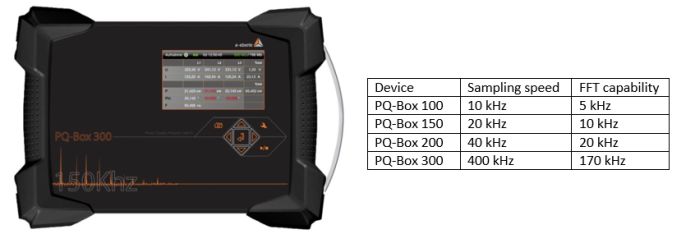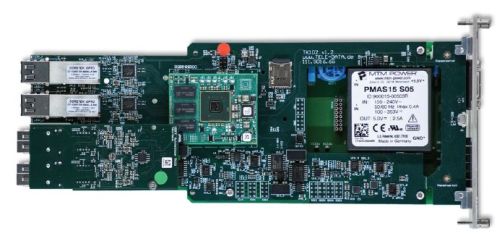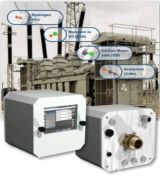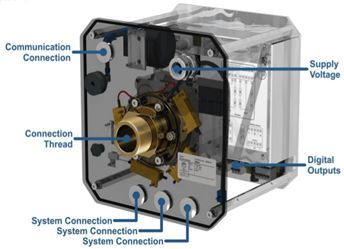| HV Power Application Newsletter #19 (April 2019) | ||||||
| Commentary:
|
||||||
|
The year is progressing at a rapid rate with the Australian power sector experiencing ongoing dynamic adjustments - and with a good deal of political opinion freely applied. We must move forward in an industry is anything but static, where there will be real challenges ahead with the implementation of distributed renewable generation, both roof-top and solar / wind farms, plus the results of the ongoing debates around the continued use of coal-fired power generation. The ownership changes and regulation of the power sector has resulted in change. Bushfire mitigation regulations in Victoria have resulted in a shift in dynamic of the distribution sector in Victoria. The implementation of large-scale renewable energy projects in remote areas, far from major grid connections, has potential to open up debate on the financial responsibility for the necessary capacity expansion to accommodate the additional generation. Amongst all of this, technological solutions are being sought to maintain reliable power supply, with new technologies being implemented and the digitisation of the grid occurring. Management of assets is becoming more critical and complex. HV Power prides itself on having leading-edge solutions to the issues facing the power sector. With the close relationships we strive to develop with our customers, we see the changes first-hand. We are committed to helping our customers work through these changes, to secure a positive future for the sector. HV Power is also experiencing change as Geoff Vaughan (the founding director) retires and hands over the reins to Mike Strong and Warwick Beech, whose capable hands will lead us to a new and exciting period in our business. We wish Geoff all the best for his future endeavours and commend him on his leadership within HV Power. His vision and persona resound in this business, for which we are grateful.
|
||||||
| Farewell and a nod to a lambic pentamet | ||||||
Geoff founded the company with his first business partner Alan Hatfield in July 1994, and leaves to retire in April. Mike Strong – Managing Director and Warwick Beech – Director, continue to manage the company. |
||||||
| Transformer Condition Monitoring - Online DGA for multiple transformers | ||||||
|
||||||
Why purchase a PQ Analyser that can record beyond the 50th harmonic voltage? |
||||||
|
The PQ-Box 300 features the ability to measure and report up to the 3,400th harmonic voltage – way beyond the traditional 50th harmonic that most utilities PQ devices are capable of measuring. It was built in response to the need to see what effect modern PV inverters and EV (electric vehicle) chargers have on the power system. Not everyone needs that capability of measurement – but serious consideration should be given to use of PQ recorders with more than the traditional 10 kHz sampling / 50th harmonic measurement capability. The PQ standards now cover the 2 kHz to 9 kHz frequency band, requiring sampling speeds of at least 20 kHz. The risk of using a PQ logger with lower sampling speed is that the device is not going to show you high-order effects that may be present on your network. You will get a ‘filtered’ view, not showing the true picture of what the equipment on your network is actually being subjected to.  PQ-Box 300. As a picture is worth a thousand words, the ones below show results obtained from monitoring the same power supply simultaneously with a 10 kHz sampling device (the PQ-Box 100, with 50th harmonic capability) and a 40 kHz sampling device (the PQ-Box 200 with 200th harmonic capability). [Unfortunately a PQ-Box 300 was not available at the time this comparison was undertaken.]  PQ-Box 100 shows a pure sine wave.
 PQ-Box 200 shows sine wave distortion. The picture from the PQ-Box 100 with 10 kHz sampling (50th harmonic capable device), would lead you to believe the power supply is a perfect sine wave with no PQ issues/distortion. However, the lower picture with PQ-Box 200 using 40 kHz sampling, clearly shows that this is not the case. While we have shown a comparison using PQ-Boxes, we have similar pictures from other manufacturers – as all such devices effectively filter out the higher order harmonics they cannot record.
|
||||||
PQI-DA smart – low-cost fixed installed Class A Power Quality Recorder |
||||||
This is truly an impressive Power Quality monitoring device that caters to many different needs. The 'PQI-DA smart' has the measurement capability similar to A.Eberle’s Portable PQ Box 150 Analyser. For sites without comms infrastructure, the unit can be fitted with a memory card to store data at site, ready for manual uplift. At sites with comms, real-time data can be streamed to a remote desktop or central database for system-wide analysis.  'PQI-DA smart' power quality recorder. New firmware has been released for the PQI-DA smart (Version 1.8.10) which contains improvements including supporting a wider range of CT ratios. The ‘WinPQ smart’ software for setting and manual download of data is now at version 4.5.0.
|
||||||
SCADA cards for REG-D and REG-DA have changed |
||||||
|
After 15 years in production, component availability has forced the early retirement of A.Eberle’s REG-PED SCADA cards that are used in REG-D, REG-DA voltage regulators and similar products. NOTE: There are no changes in the supply of REG-D and REG-DA themselves. A new series of cards providing enhanced cyber-security now take over from the REG-PED. For REG-D The RJ45 copper Ethernet interfaces can be ordered as 100 or 1000 Mbit rated. The REG-PEDSV card still offers serial COM1/2/3 interfaces, so COM1 or COM3 can be used for serial protocol, or for remote engineering connection to the 'REG-D'. The appropriate wiring out of the desired interfaces must be specified in the design drawings. The REG-PED did feature a DB-9 connector on the rear of the card, which provided another method to access to COM1 interface (but COM1 interface was often wired out to the rear enclosure screw terminals to allow connection there). In the REG-PEDSV, the DB-9 is removed (to make way for optional Ethernet ports 3&4) – but the COM1 connection can still be made via wiring to the rear enclosure terminals etc. The new REG-PEDSV card:
For REG-DA Where customers want to retain access to the two 'spare' slots in the REG-DA, a new REG-PE card is available. The new REG-PE features two Ethernet interfaces, so from our point of view, it’s the logical compatible alternative for the existing REG-DA ‘PED’. The new REG-PE (with two Ethernet ports):
The old PED cards are no longer available, so supply of REG-PEDSV and new REG-PE cards are being expedited. We’re expecting there might be a few technical questions, so remind you that the quickest route to support is by contacting our Service Support team on 0800 HV CALL. You do not need to update the REG-D/DA firmware to use the new SCADA protocol cards, but must use new SCADA protocol software WinConfig 13.2 or later.  Example of REG-PEDSV SCADA card for REG-D.
|
||||||
WinConfig 13.2 installation versions |
||||||
For those looking to obtain the latest version of WinConfig to support A.Eberle’s new REG-D/DA ‘PED-SV’ SCADA cards, you might notice that the A.Eberle website typically has two versions of WinConfig:
|
||||||
| In Australia call 1-800 172 120 | www.hvpower.com.au ABN: 62 113 118 536 | |||||
|
Copyright 2019 HV Power Measurements and Protection Limited. | ||||||




